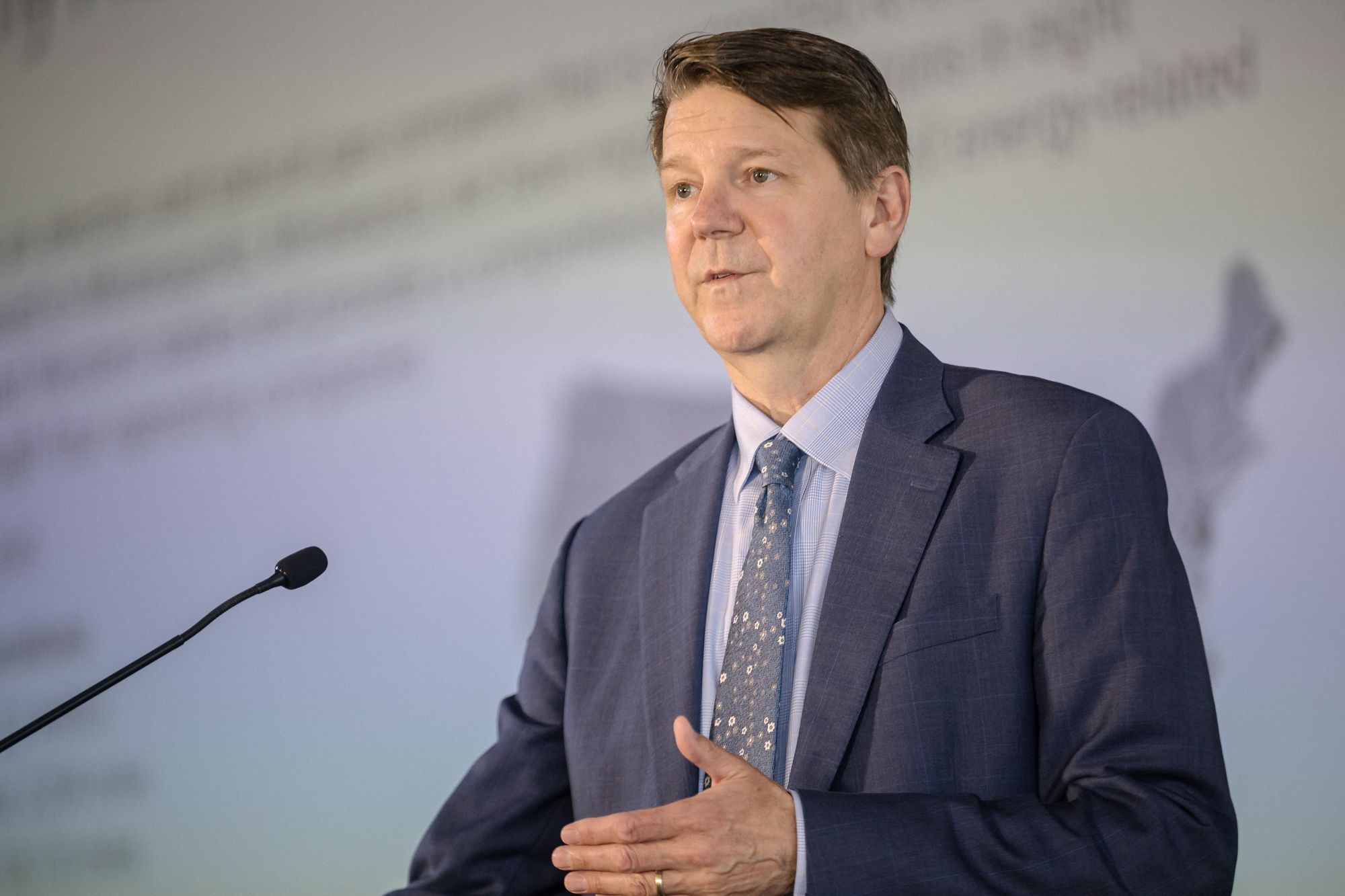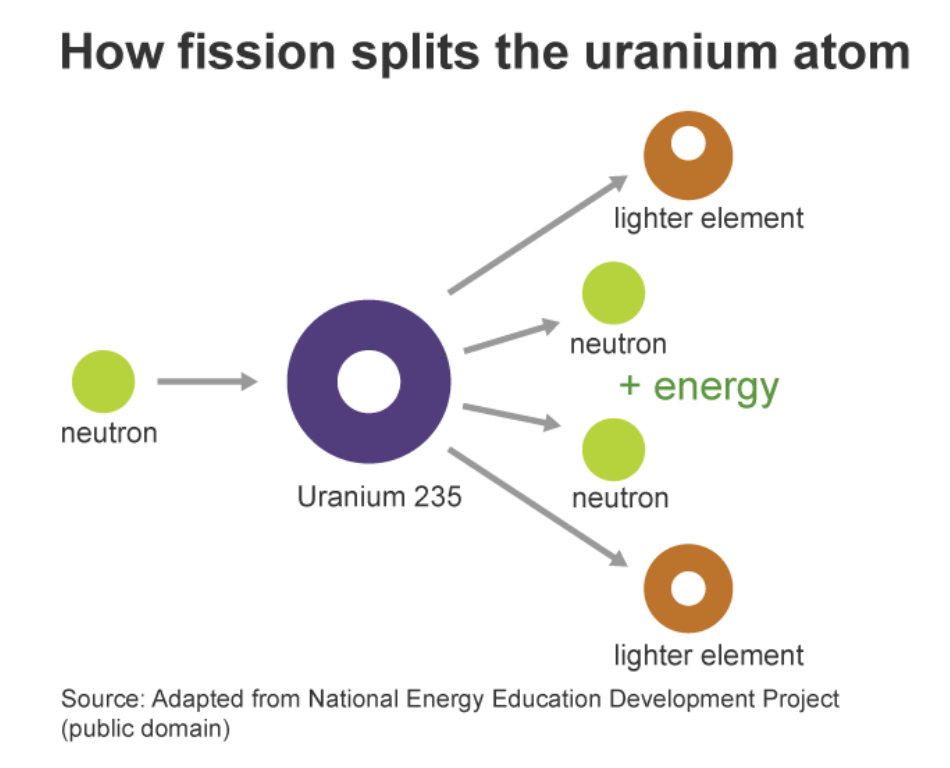A utility, a tribe, a professor, and ... Miss America? 4 voices in today's nuclear power debate
In Part III of our series, Nuclear at a Crossroads, we explore the nuances in the controversy behind nuclear power

This is Part III in Project Optimist's Nuclear at a Crossroads series. Please join us on Tuesday, Nov. 14 from 5 to 7 p.m. for a virtual discussion about nuclear power in Minnesota. Sign up here.
Minnesota has a deadline to meet. By 2040, a mandate signed earlier this year requires all of the state’s energy generation to come from carbon-free sources. Renewables like wind, hydro, and solar are part of that path forward, but industry experts say a steady source of baseload energy production will likely be needed to offset their inevitable intermittency. In other countries, carbon-free baseload production has often come from nuclear power.
Hoping to gain a better understanding of nuclear — its potential and its problems — Project Optimist sat down with Xcel Energy President Chris Clark (whose company operates the only nuclear plants in the state of Minnesota), well-qualified academics, and advocates representing both sides of the issue.
Read on for four of these experts sharing insights on the problem of nuclear waste, the uncertain future of nuclear power, and its potential, if supporters can overcome its public relations challenge.
Prairie Island Indian Community’s Heather Westra: ‘Why create something that nobody wants?’
In Minnesota, few people know the challenges of nuclear power — and nuclear waste in particular — better than the members of the Prairie Island Indian Community.
The tribe is Dakota, of the Bdewakantunwan band. Dakota people have occupied the state for more than 1,000 years. The Prairie Island community is currently the largest employer in Goodhue County and owns the second-largest hotel property in the state, Treasure Island Resort & Casino.
In the early 1970s, the tribe was saddled with a neighboring nuclear facility against their will — the community didn't even have electricity of their own until off-site power was brought in for construction of the plant. Since then, the close proximity (only 700 yards), broken promises, and outright failures of communication have fueled conflict.
When the Prairie Island reactors were brought online, Northern States Power (today Xcel Energy) assured the facility would not be used for storing nuclear waste. Instead, spent fuel would be sent to a reprocessing facility in New York and ultimately find a home in a federal repository. But the West Valley, NY facility was abandoned a few years later, and cleanup is still ongoing to this day. By the 1980s, the promised national repository was still decades away (that original plan, too, has been all but abandoned as the country works toward a new consent-based siting model based on two decades of work in Canada), and Northern States Power and others were reaching capacity in their fuel rod cooling pools.
The waste needed to go somewhere, or the plants would have to be shut down.
"It's a complicated issue," explains Heather Westra, who has worked with the tribe both as a staff member and as a consultant since 1994, shortly after the moratorium. "It's really the federal government that's supposed to take care of the spent fuel, and so the plants across the country either shut down or go to on-site storage because there is no central repository."
State legislators and the Minnesota Public Utilities Commission eventually granted conditional authorization for up to 17 dry fuel storage casks at Prairie Island. The move (which came with further stipulations for investment in renewable energy among other requirements) prevented the closure of the Prairie Island plant but also violated the original commitment.
This was 1994, and the back-and-forth led not only to the concession for waste storage but also precipitated a statewide moratorium which continues today. In part, legislators wanted to avoid the conflict compounding.
Were Minnesota to lift the moratorium, Westra believes the tribe would continue to oppose nuclear development predominantly for concerns over waste. Nevertheless, she encourages the state to move forward with a study into nuclear technologies and the possible consequences of lifting the moratorium — if only to better shed light on the waste issue and need for a permanent solution.
"That's the thing that always gets pushed to the side. It's supposed to be a short-term solution to a problem, and the short term keeps getting longer and longer," Westra said.
And what about Xcel Energy's plan to request 20-year license extensions for the Prairie Island reactors?
"That's another 20 years' worth of spent fuel that nobody knows what to do with," she said. "Why create something that nobody wants?”

Xcel Energy’s Chris Clark: ‘We really need to be chasing all ideas’
Only one power utility, Xcel Energy, currently operates nuclear power in the state of Minnesota. The company's three reactors — one in Monticello and two in Prairie Island which produce a combined 1.7 gigawatts of nuclear power — have been at the center of every state conversation on nuclear since the late 1960s. The nearly 30-year-old statewide moratorium on new nuclear development means the company will maintain — at least for the present — a sometimes unenviable monopoly.
As president of Xcel's Minnesota, North Dakota, and South Dakota territories, Chris Clark is quick to highlight that his company was the first in the nation to announce a plan for reaching 80% carbon-free energy by 2030, with 100% planned by 2050. Earlier this year, however, the state of Minnesota moved those goal posts, requiring a 100% carbon-free energy grid by 2040. Clark calls the new plan "ambitious," but said Xcel is prepared to comply within the limits of technology and common sense.
"We need to keep the door open that — maybe it's 2040, maybe it's 2042; maybe it's 98%, maybe it's 100%," Clark said, explaining that the current legislation offers the opportunity for utilities to present their needs and concerns to state regulators as we near the deadline. "I think we're all capable of having that conversation," he said.
Xcel plans to extend the lives of the Monticello and Prairie Island facilities by 20 years. If granted, that would see all three reactors turning 80 years old, reaching the end of their licenses in the early 2050s. That age brings challenges and advantages. Both plants experienced shutdowns this year – Monticello in connection to two consecutive (and nationally reported) leaks containing irradiated tritium, and the Prairie Island plant following a transformer malfunction.
Conversely, the company said that their experience, more efficient processes, and new technologies have reduced operational costs at the Monticello site, as an example, by more than 30% in the last decade.
Clark said he hopes the additional extensions will allow time for new technologies — nuclear and otherwise — to emerge in the market that will influence future construction decisions.
Clark calls nuclear critical for Xcel's carbon-free plans. "We wouldn't be able to shut down all of our coal units without having nuclear as part of our backbone," he explains. Looking specifically to state legislators, Clark encourages a study into advanced nuclear technologies, saying it may help "get the facts on the table."
"At the pace that people want to achieve carbon reductions, we really need to be chasing all ideas and figuring out what will be successful," Clark said. The right balance, he believes, will be a mix of approaches.
"There are still some who believe that you can achieve the future with simply wind, solar, and batteries. We've looked very hard at this and concluded that's taking too much risk with affordability and reliability — ignoring [other] technology opportunities," he said. "We're not in that camp."
But the clock is ticking. Median time for construction of a nuclear power facility in 2022 is 89 months — more than seven years, according to Statista. The recently completed Vogtle 3 nuclear reactor in Waynesboro, GA took more than 11 years after receiving a license from the U.S. Nuclear Regulatory Commission in February of 2012.
The plant is the country's first new operating nuclear facility in seven years.
"I do think now is the time for the state [of Minnesota] to figure out what they want to do and recognize that companies like Xcel Energy are moving to the place where this isn't just something we're going to model with generic numbers," Clark said. Big money is being spent now by Xcel and other utilities, working to decide which technologies will make the cut before the 2040 mandate. As to nuclear, he cautions that "the train is getting ready to leave the station, so the state should decide if this is something they're interested in."

UW-Madison Prof. Paul Wilson: So how does nuclear power work, really?
Nuclear power is the result of breaking uranium atoms apart. Specifically, it’s the breaking of uranium atoms through the process of nuclear fission, which is the only form of nuclear power currently in use.
"And each time you do that, we release a whole bunch of energy. And that energy turns into heat, which ultimately boils water, turns a turbine, and turns a generator," said Paul Wilson, a professor of nuclear engineering at the University of Wisconsin-Madison.
Where nuclear fission is the fracturing of heavy atoms, nuclear fusion is the combining of light atoms — like hydrogen. The latter is the same process that powers the sun.
"As a quirk of nature, you can get energy out by splitting very heavy things or by combining very light things," Wilson said. "Everything sort of flows toward iron in the middle. And that's true across the universe."

Is it safe? Wilson said the industry has learned a great deal from historic accidents, such as Chernobyl, Three Mile Island, and Fukushima. Still, he acknowledges that many will remain unconvinced and unpersuadable.
"My assessment is that the risks of nuclear energy are very low compared to a lot of the other risks — both that we take on personally, under our own control, but also societally. Is nuclear energy free of all risks? No. Do we know how to manage those risks well? I think yes, we do," he said.

Nuclear advocate and Miss America 2023 Grace Stanke: 'When we're doing good things, don't we want people to know?'
When 21-year-old Grace Stanke was in the fourth grade, her father, a civil engineer, was diagnosed with cancer. She knew that he was sick, as well as a child could, but didn't understand the outpouring of support to her family. Eventually, he recovered, everyone seemed happier, and life returned to normal.
Then it happened again.
Stanke was a freshman in high school this time and had studied cancer enough to understand the risk to her father's life. His spleen swelled as he withered to the point of being barely alive. She felt hopeless. She prayed for him. She feared for him. She remembers the warmth of hearing others pray for him as well.
"He's alive today because of nuclear medicine," Stanke said, during a speech at the North American Young Generation in Nuclear conference in Minneapolis in June.
What is nuclear medicine?
Nuclear medicine encompasses an array of practices leveraging radioactive materials to treat diseases or to better understand the body’s internal operation. As one example, Cobalt-60 produced during the nuclear fission process is often used for the sterilization of medical equipment as well as in radiotherapy for neurological conditions and the treatment of cancer. Other radioactive materials work as tracer elements. Injected or taken orally, these tracers allow doctors to view and evaluate the condition and function of soft tissue and organs that wouldn’t be visible with traditional x-rays.
She enrolled in the University of Wisconsin-Madison nuclear engineering program at age 17 and became a self-proclaimed industry advocate almost immediately.
"I learned about how [nuclear technology] exists all around me. And I learned how it saved my dad's life. I learned how it's something that is really an integral part in our society that we don't recognize," Stanke said in a follow-up interview. She was blown away by the potential applications of nuclear technology.
A series of uncommon events followed. Stanke was chosen as Miss Madison in 2020, seeing it as another way to represent the nuclear industry.
Stanke was chosen as Miss Wisconsin in 2022 and then last December became Miss America. Now, she's using her platform to advocate for nuclear technologies — with a focus on nuclear energy — while finishing a bachelor's degree in nuclear engineering.
She said the nuclear industry needs a makeover, and she means to drag it kicking-and-screaming into the modern age.
"I think our fatal flaw as an industry is [that] we operated under the mentality of 'no news is good news.' Who came up with that?! When we're doing good things, don't we want people to know — shouldn't we be proud of that?" Stanke asked.

Nuclear's numbers are impressive on paper. A uranium pellet smaller than the first joint of your index finger contains the equivalent energy of one ton of coal. In your entire lifetime, were all the electricity you used generated by nuclear energy, the total fuel would fit inside a can of soda. Acre-for-acre, nuclear energy is incredibly efficient — a comparable solar farm requires 30 times the land and an equivalent wind farm demands 170 times more space, according to the Nuclear Energy Institute.
In the United States, combined waste from a year's operation of every nuclear plant in the country would fill an Olympic-sized swimming pool only half full, while preventing the release of 400 million metric tons of carbon dioxide. In over 50 years of operating, the more than 400 nuclear reactors in the world (providing 18% of power in "advanced economies," such as the United States) have avoided the release of more than 55Gt of CO2 — that's 55,000,000,000 tons or the ten-year output of more than 1 billion vehicles.
Many challenges around nuclear still need to be resolved, not least of which is the extremely long half-life of its radioactive waste, its troubled history, and public opinion.
Stanke believes the nuclear industry needs to be humanized through stories like her own; that if people really understood nuclear technology, the fear would vanish. She believes that government leaders need to open their eyes to nuclear as an option in an era of decarbonization and an increasing need for electric energy production.
"It's not a science problem," she argues, "it's a policy problem."
Be sure to subscribe to our mailing list to catch next week's story, Part IV of Nuclear at a Crossroads, which looks at the history of global nuclear disasters. And please join us on Tuesday, Nov. 14 from 5 to 7 p.m. for a virtual discussion about nuclear power in Minnesota. Sign up here.
